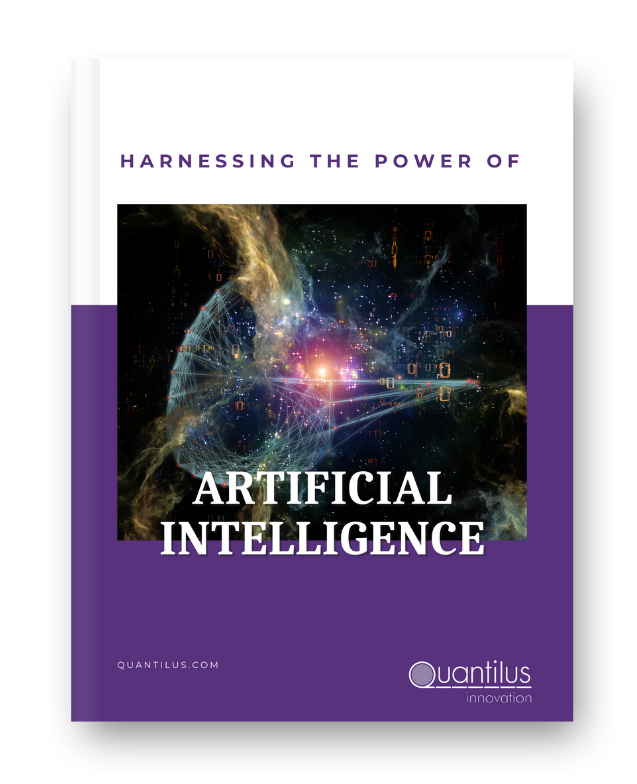

The concept of generative AI may seem intimidating, but it is straightforward. It refers to artificial intelligence algorithms capable of generating or creating various outputs from the data it’s trained on. These outputs can take many forms, such as text, photos, videos, code, data, and 3D renderings. Unlike other forms of AI that may be used for tasks like data analysis or controlling a self-driving car, the primary goal of generative AI is to produce content.
Its popularity is mainly due to the emergence of innovative AI programs such as OpenAI’s ChatGPT and DALL-E that harness this technology to produce mind-blowing outputs in just a matter of seconds. With these programs, people can generate diverse content, including computer code, essays, emails, social media captions, images, poems, and even raps!
The success of ChatGPT has been nothing short of phenomenal, attracting more than one million users within a week of its launch. This spectacular achievement has prompted several other companies to delve into the generative AI space, with big names like Google, Microsoft’s Bing, and Opera competing to develop new use cases for this technology.
With so much excitement surrounding generative AI, it’s no surprise that people from all corners of the globe are eagerly waiting to see what these programs can do next. From producing realistic images of non-existent objects to creating compelling narratives, the possibilities of generative AI seem endless, and its potential impact on various industries cannot be ignored.
To understand generative AI is acknowledging its connection to machine learning, a subset of AI that focuses on training systems to make predictions based on data. Predictions are achieved by using algorithms that can identify patterns and relationships within large datasets.
Generative AI utilizes machine learning to create new outputs based on the data it has been trained on. For instance, DALL-E’s ability to generate images based on prompts is a prime example of this. The machine learning algorithms underlying generative AI help it discern what the prompt means via a large language model and generate an image accordingly. As such, generative AI can be thought of as a machine learning framework that enables systems to create new outputs based on the data they have been trained on.
Generative AI can be found in many systems and models that use AI to create new outputs. Currently, some of the most popular and widely known examples of generative AI include ChatGPT, DALL-E, and Stable Diffusion. Multiple applications have been based on these methods, such as Midjourney to help with art and images, ElevenLabs, Murf for audio, Jasper.ai, and CopyMatic to help with text reproduction. These are a few examples of how generative AI has gained a significant following due to its ability to create new content, such as text and images.
Google’s unreleased MusicLM, which generates music from text, is another example of generative AI in action. Additionally, Google is currently developing a project called Bard, which will enable the generation of multiple kinds of media, such as videos and images, using a single AI model.
The current landscape of Generative AI keeps getting more volatile with every passing day. These are just a few examples of the many applications of generative AI, with more and more systems and models being constantly developed. Just last month, OpenAI showcased GPT 4 and integrated it into ChatGPT, where it also gained the ability to answer questions related to images.
With generative AI, humans can now create and produce content at an unprecedented speed and scale. These AI applications allow individuals to offload routine tasks, freeing up time for more creative endeavors. Moreover, generative AI allows people to explore new ideas and concepts that may not have been possible without access to large datasets and the computational power of AI.
Generative AI empowers humans to unleash their creativity by providing a toolset to generate and iterate on ideas, designs, and content. By automating routine tasks, such as formatting or color selection, AI allows humans to focus on the creative aspects of content creation, such as storytelling and composition. This approach to content creation can be especially useful for designers, writers, and artists who can leverage the power of AI to expand their horizons and push the boundaries of their creativity.
Generative AI is transforming the way businesses of all shapes and sizes operate. With its ability to automate routine tasks and generate new content, it has the potential to unlock new possibilities and enhance productivity. Small businesses can use generative AI to create personalized content for their customers, automate their marketing efforts, and streamline their operations. Medium-sized businesses can leverage generative AI to create design options, automate customer service, and improve supply chain management. Large enterprises can use generative AI for various purposes, from automating complex processes to generating new product ideas and improving customer engagement.
Companies, however, need to carefully consider their limitations, including the potential for bias and lack of transparency. They need to ensure that the generated content aligns with their brand values and customer expectations. Furthermore, businesses must also consider the legal and ethical implications of using generative AI, particularly in sensitive areas such as healthcare and finance.
Despite the challenges, the potential benefits of generative AI for businesses are immense. Automating routine tasks and generating new content can enable companies to focus on more strategic and creative initiatives, driving innovation and growth. It also has the potential to enhance customer experiences and drive brand loyalty, as companies can create more personalized and engaging content.
Generative AI is transforming the business landscape, offering new opportunities and possibilities for companies of all sizes. As more businesses adopt generative AI, we are likely to see a fundamental shift in how we approach work and productivity, unlocking new levels of creativity and innovation. However, businesses must also be aware of the potential challenges and limitations of generative AI and ensure that it is used ethically and responsibly to achieve the best outcomes for all stakeholders.
Reliability of vast amounts of data: While generative AI models have tremendous potential, there are also some notable shortcomings to consider. One of the primary issues with generative AI is that it relies on vast amounts of data from across the internet to make predictions and generate outputs. However, there is no guarantee that these predictions will be accurate, as the model may not have access to all relevant information or may be biased in some way due to the data it has been trained on.
Perpetuate biases and inaccuracies: Moreover, generative AI models may inadvertently perpetuate biases and inaccuracies present in the training data, which can result in unintended consequences. For example, chatbots may provide incorrect information or produce content that perpetuates harmful stereotypes. This can be especially concerning when the generated content is consumed by a large audience without proper context or fact-checking.
New unknown technology: Another significant limitation of generative AI is that it is still a relatively new technology, and as such, there is still much that we do not fully understand about how these models work. It can be difficult to determine whether the outputs generated by generative AI are accurate or reliable, making it challenging to trust the information or content they produce.
In short, using generative AI still requires a level of review and oversight. The AI does not have the ability to determine facts from fiction or prioritize the level of importance.
Generative AI has emerged as a powerful tool for unlocking human creativity and pushing the boundaries of what is possible. The potential of generative AI to transform the way we create and consume content is undeniable. As we continue to explore the potential of generative AI, we must also recognize the role that humans will continue to play in content creation. While AI may be capable of generating content at a scale and speed that was previously impossible, it is still humans who provide the creative spark and the emotional depth that make content truly impactful.
Thus, generative AI represents a significant shift in how we create and consume content. While some challenges and limitations must be addressed, the potential benefits of these systems are groundbreaking. By embracing the power of AI to unlock human creativity and push the boundaries of what is possible, we can create a future where technology and humanity work together to create innovative and impactful content.


Need help navigating your AI journey?
Download our eBook for insights and tips to ease your way into adopting AI for your business – the smart and practical way!
Need help navigating your AI journey?
Download our eBook for insights and tips to ease your way into adopting AI for your business – the smart and practical way!